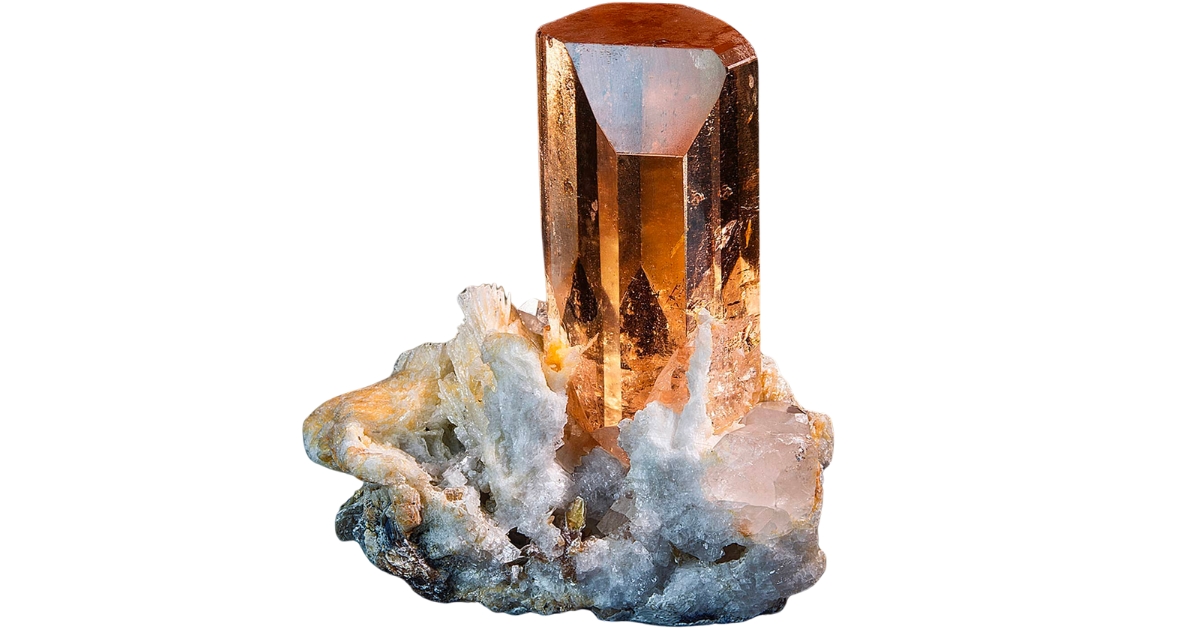Did you know that topaz comes in many amazing colors, making it one of the most exciting and diverse gemstones out there? This variety of colors is one of the main reasons there are so many different types of topaz.
Because of this, what topaz looks like can vary a lot. It can be clear and colorless, like a sparkling diamond, or it can show off brilliant blues, sunny yellows, pretty pinks, and even rich oranges.
If that’s not amazing enough, topaz can also change color! Some start colorless and then, after being treated with heat or radiation, turn into vibrant blues or other hues.
Join us as we explore the vast topaz types and understand what makes each of them distinct and special. With its range of types, there’s a piece of topaz out there for you.
The 13 Different Types Of Topaz And What They Look Like
Topaz is a fascinating and beautiful gemstone that comes in many types. As we explore them, you’ll discover the value of topaz, why it’s so cherished, and how each color adds to its overall allure and significance.
London Blue Topaz
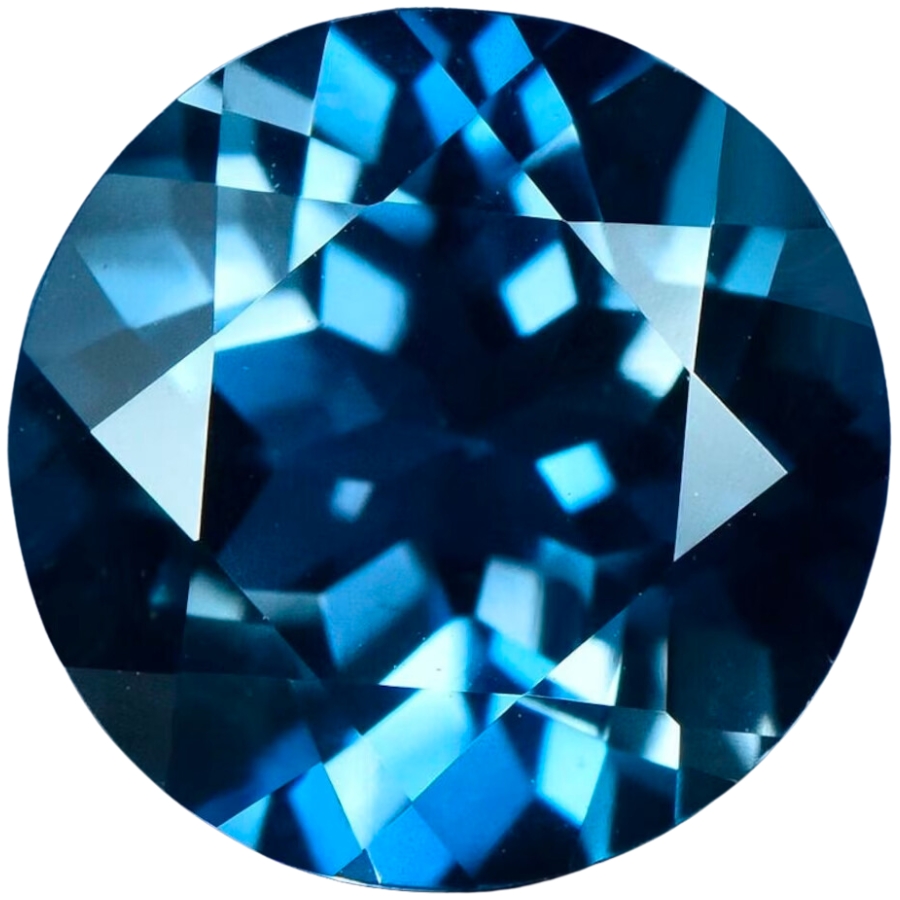
London blue topaz stands out with its deep, rich blue color, often described as having a slight grayish undertone. It’s the darkest shade of blue topaz available, and it’s a favorite for those who love gems with a bold and sophisticated look.
It starts as a colorless or lightly tinted stone. Then, through a process of irradiation followed by heat treatment, it transforms into that captivating deep blue.
This treatment process is longer and more complex compared to other blue topaz types, which helps create its unique hue.
One of the reasons London blue topaz is so valued is because of its versatility in jewelry. It’s a hard stone, which means it’s durable and perfect for everyday wear.
Plus, its intense color pops and adds elegance to any piece. It’s a great choice for both casual and fancy outfits. It’s also often used as a birthstone for December.
Where you can find London blue topaz
While London blue topaz is typically enhanced through treatment, the raw stones originally come in areas with certain types of rocks, often in places with a history of volcanic activity.
If you want to know where to find topaz, Brazil is a major source of the London blue type. In the USA, you can also find this gem, particularly in Texas and Colorado.
DON'T MISS OUT ON ANY GREAT FINDS!
While you're out searching you're going to find A LOT of other interesting rocks and minerals along the way. The last thing you want to do is toss out something really interesting or valuable. It can be easy to misidentify things without a little guidance.
You absolutely need a good reference guide in order to understand what you're looking at!
We've put together a fantastic field guide that makes identifying 140 of the most interesting and valuable rocks and minerals you will find REALLY EASY. It's simple to use, really durable, and will allow you to identify just about any rock and mineral you come across. Make sure you bring it along on your hunt!
Now, back to the identification specifics:
Swiss Blue Topaz
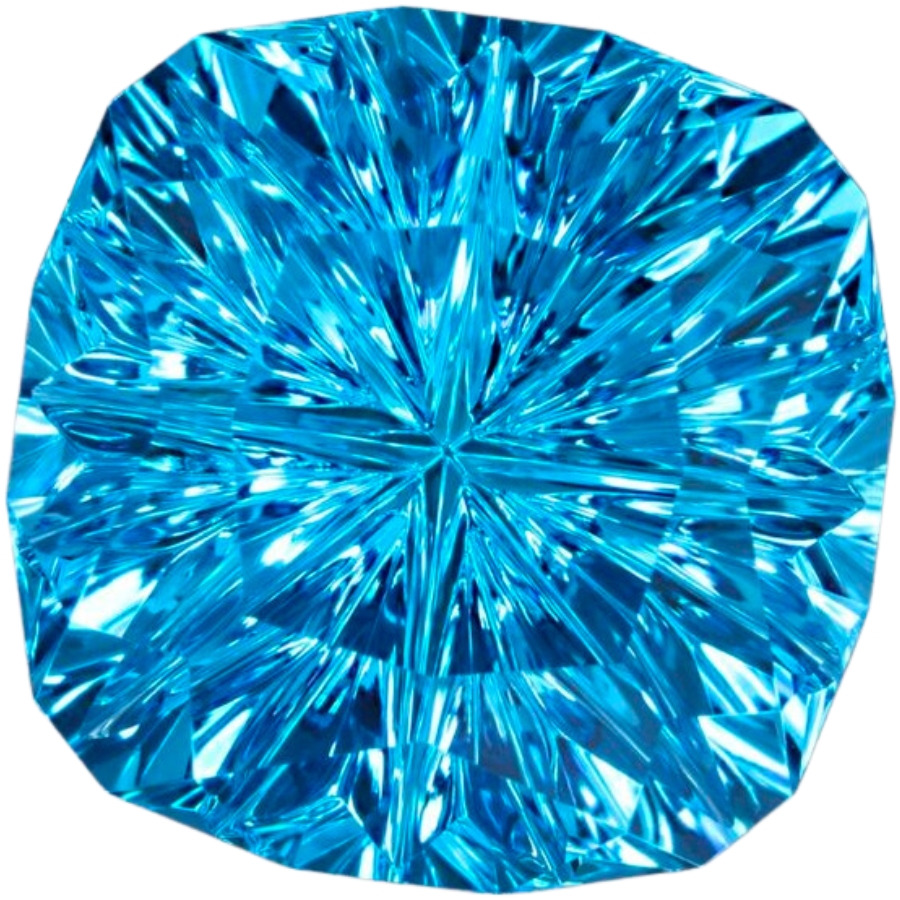
Swiss blue topaz is known for its bright, vibrant blue color. This type of topaz is in the middle of the other blue types— it’s more intense than sky blue topaz but not as dark as London blue topaz
It strikes a perfect balance of color that’s both lively and elegant. Its unique shade is often compared to the clear blue of a tropical ocean.
Most Swiss blue topaz are initially colorless or lightly tinted. It’s transformed into its dazzling blue through irradiation and heat treatment.
An interesting trivia about this topaz type is that it’s often used in celebrating the 4th wedding anniversary. It’s seen as a symbol of love and affection.
Its striking color also makes it a popular choice for jewelry, adding a pop of brightness that can catch the eye.
Where you can find Swiss blue topaz
When not formed through treatment, Swiss blue topaz can be found in several places with the right mix of minerals and geological conditions. If you’re interested in the best rockhounding locations, check out our article on that.
To find this type of topaz, you can explore areas in Utah, Colorado, and Texas. Outside the country, meanwhile, Brazil is a major source of topaz, including the Swiss blue type.
Sky Blue Topaz
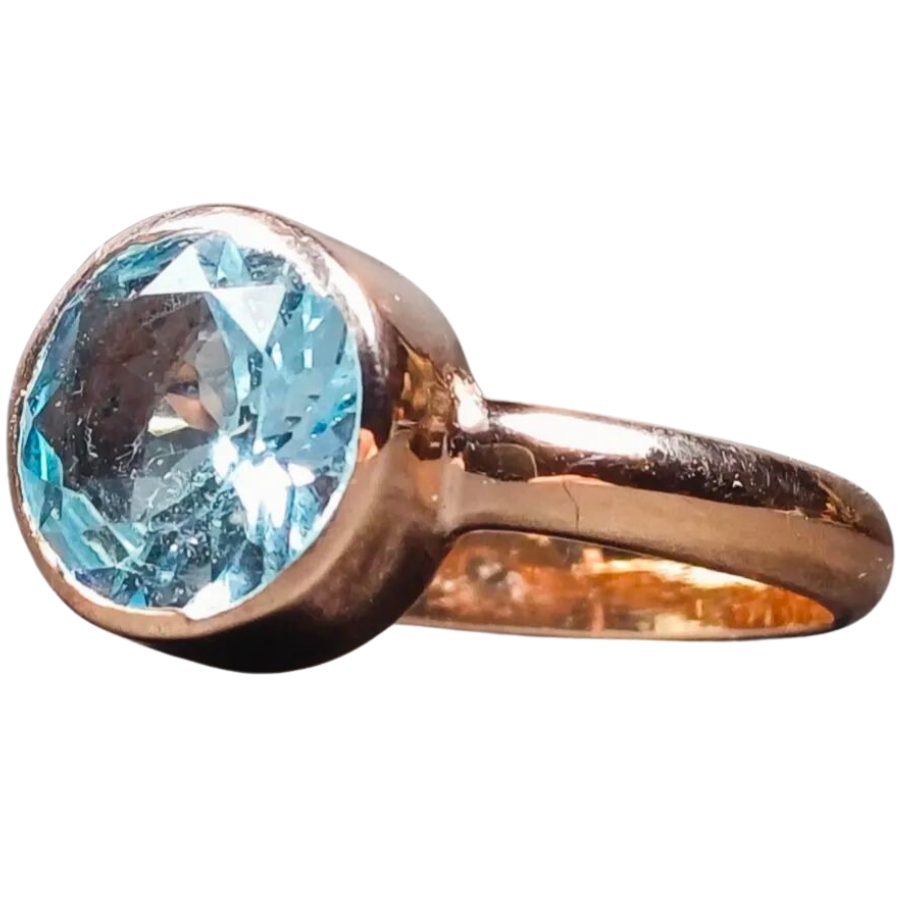
Sky blue topaz captures the essence of a clear, serene sky. It’s the lightest blue topaz variety, featuring a soft, gentle blue that’s both soothing and eye-catching.
This subtle yet beautiful shade of blue makes sky blue topaz appeal to those who prefer a more understated elegance.
People value this topaz type for its versatility and charm. Its light blue color works well with a variety of styles and settings, from casual to formal wear. Its durability and affordability also make it a popular choice for everyday jewelry.
Sky blue topaz is also often associated with loyalty and faithfulness. This symbolism makes it a thoughtful gift for friends or loved ones.
It’s also a popular choice for December birthstone jewelry, making it a special and meaningful present for those born in that month.
Where you can find sky blue topaz
You can uncover sky blue topaz in several places. Brazil is known for its abundant topaz deposits, including this type. You can also find it in the areas of Utah and Texas.
If you need more specific guidance, refer to our article on where to find crystals.
Imperial Topaz
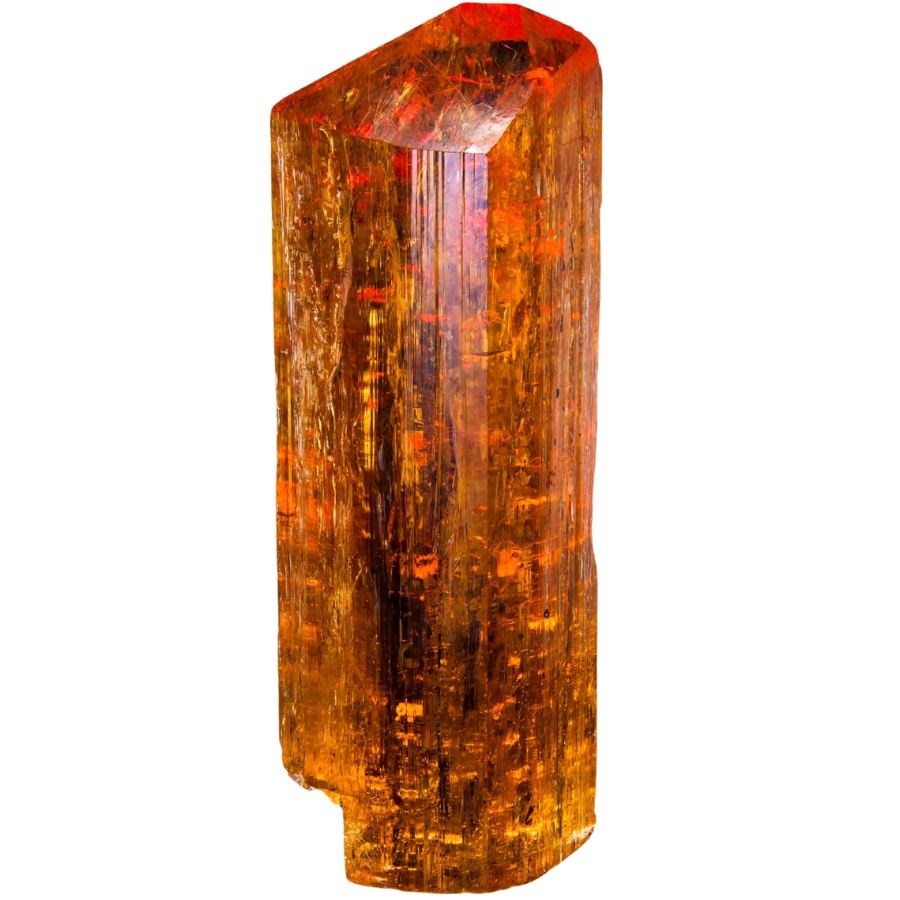
Imperial topaz is a truly special and rare gemstone that stands out with its striking colors. It’s known for its rich shades of orange, often with pink or peach undertones.
The vibrant, fiery hues of imperial topaz set it apart from other gemstones, giving it a royal and luxurious feel— that’s why it’s called “Imperial.”
This gemstone forms naturally without the need for any color-enhancing treatments. The unique combination of elements in the areas where it grows contributes to its distinctive color.
It’s often associated with the sun due to its warm, golden colors. This association has made it a symbol of energy and vitality, adding to its appeal and significance as a gemstone.
Aside from its beauty, imperial topaz is also durable, which makes it great for all kinds of jewelry that can be worn every day.
Where you can find imperial topaz
The most famous source of imperial topaz is Brazil, particularly in the Minas Gerais region. On the other hand, the occurrence of this topaz type is quite rare in the USA.
If you’re interested in knowing where to find other equally beautiful gemstones, check out our article on gem mining near you.
White Topaz (Colorless Topaz)
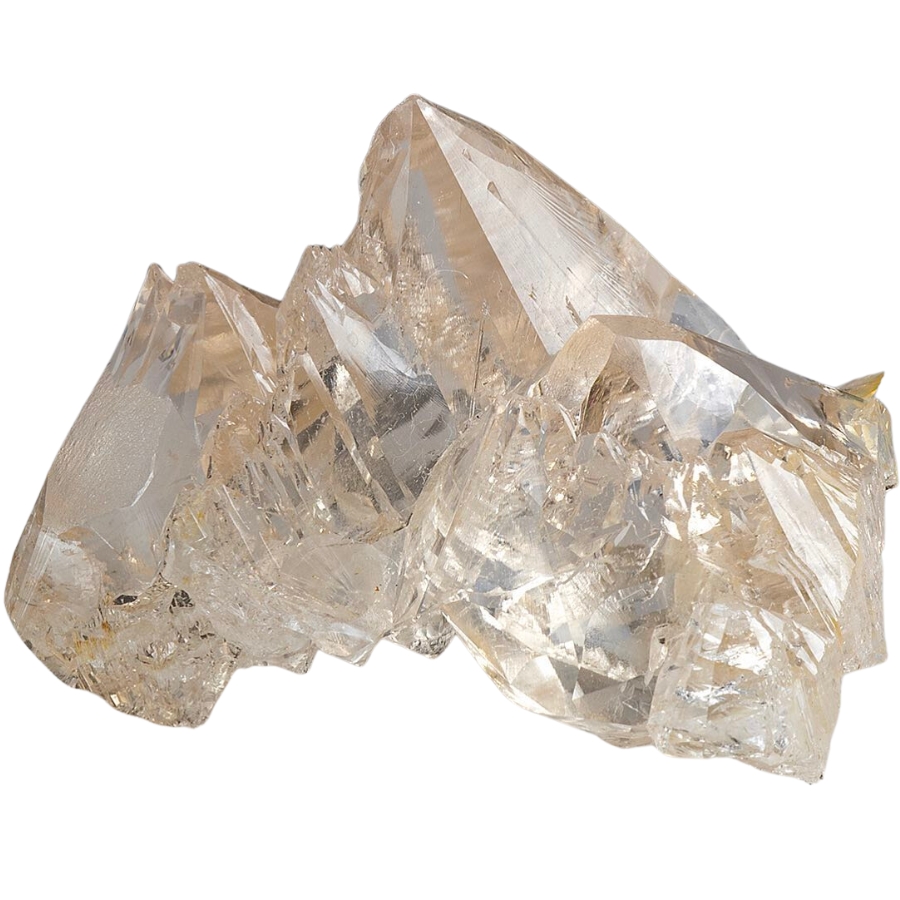
White topaz is known for its crystal-clear, colorless appearance. It’s like a blank canvas, reflecting light beautifully and sparkling just like a diamond.
This makes white topaz a popular and affordable alternative to diamonds, especially for those who love the look of a clear, brilliant gemstone without the hefty price tag.
Its distinct look comes from its pure form. It’s naturally formed, and its lack of color is actually a rarity.
This clear quality gives white topaz a versatile and timeless appeal, making it suitable for a wide range of jewelry styles, from modern to classic.
This type of topaz is also often used in April birthstone jewelry as an alternative to diamonds. It’s also popular in bridal jewelry, thanks to its clear, clean look that symbolizes purity and new beginnings.
Where you can find white topaz (colorless topaz)
Brazil is known for its significant deposits of topaz, including the white or colorless variety. In the USA, states like Utah, Colorado, and New Hampshire also have topaz, with some areas producing the white type.
Yellow Topaz (Golden Topaz)
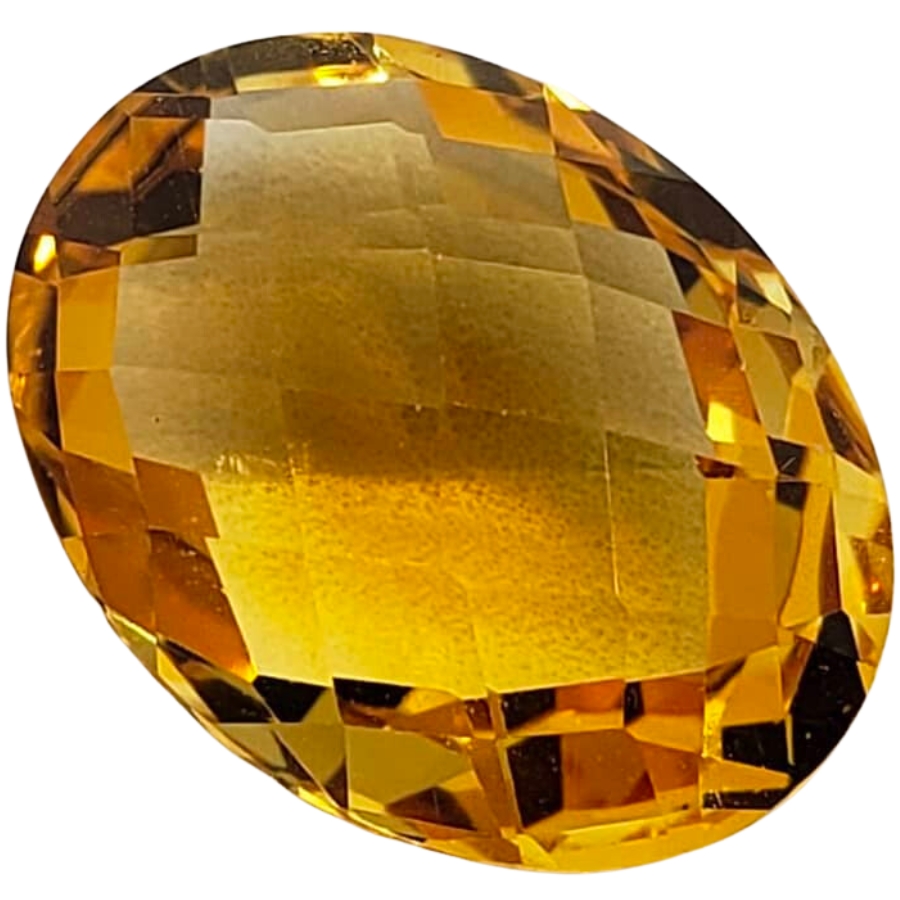
Also known as golden topaz, yellow topaz has a warm and sunny appearance. Its color ranges from a pale, lemony yellow to a rich, honey gold.
The depth and richness of its color can vary, but it always maintains a certain warmth and brightness that’s reminiscent of sunlight.
This gemstone forms naturally and gets its yellow color from the trace amounts of iron in the topaz crystal structure. The distinct yellow hue makes it particularly appealing for those who love vibrant and cheerful colors.
It’s a durable gemstone, too, which means it’s great for everyday wear. It pairs well with both gold and silver, offering versatility in design.
It’s also often associated with the sun and its life-giving energy. This association has made it a symbol of optimism and positivity. Additionally, yellow topaz is one of the birthstones for November.
Where you can find yellow topaz (golden topaz)
Like the other types of topaz, yellow or golden topaz is famously found in Brazil. In fact, it’s known for producing large and high-quality topaz crystals.
If you want to search for it within the USA, Utah and Colorado are also known for their topaz deposits, including the yellow type.
Sherry Topaz
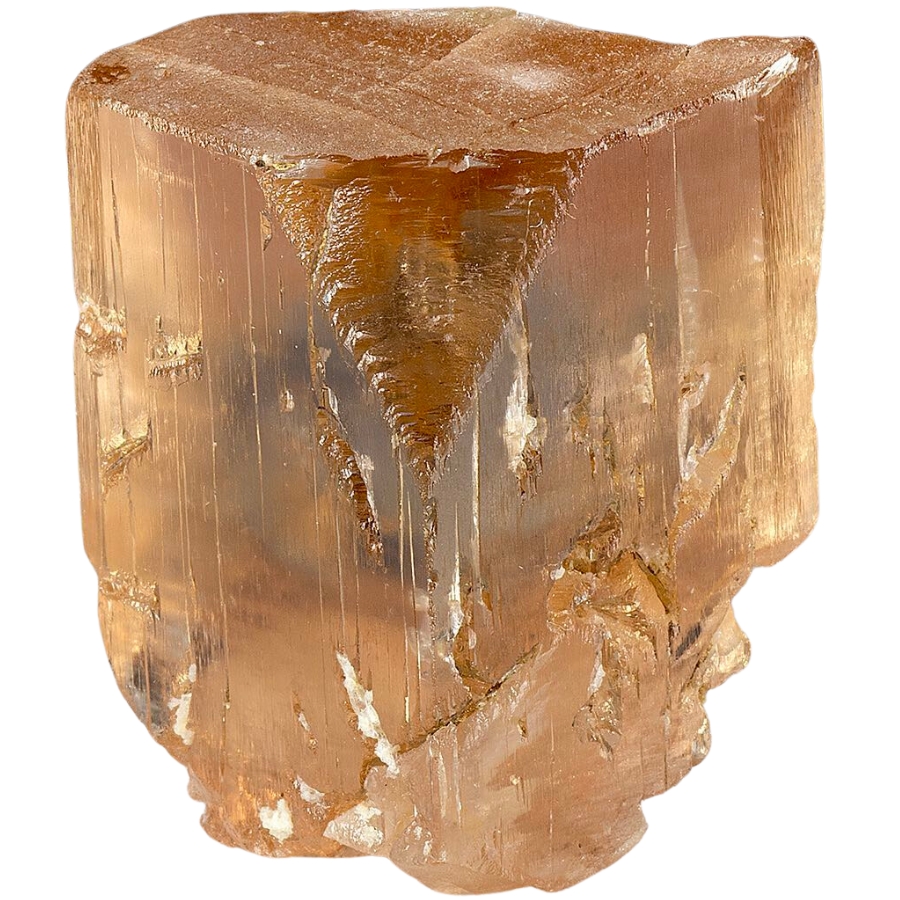
Sherry topaz is often mistaken for other precious stones like citrine or smoky quartz due to its color. However, it has its own unique properties and characteristics that set it apart.
Its colors range from light yellow to deep, rich orange, and sometimes even a reddish-brown, similar to the color of sherry wine, which is where it gets its name.
The varying shades of sherry topaz make it a distinct and attractive choice for those who love gemstones with earthy, autumnal hues.
This beauty occurs naturally, and its color comes from the presence of certain elements within the gem. Each stone can have a slightly different shade, which adds to the uniqueness and charm of this variety of topaz.
It’s valued for its beauty and versatility in jewelry making. Its warm tones make it a perfect match for both gold and silver settings, and it can be cut into various shapes to create stunning pieces of jewelry.
Where you can find sherry topaz
Once again, Brazil is a notable source of this topaz type as it’s known for its diverse and high-quality gemstones. Colorado and Utah in the USA are also home to topaz deposits, where sherry topaz can occasionally be found.
Cognac Topaz
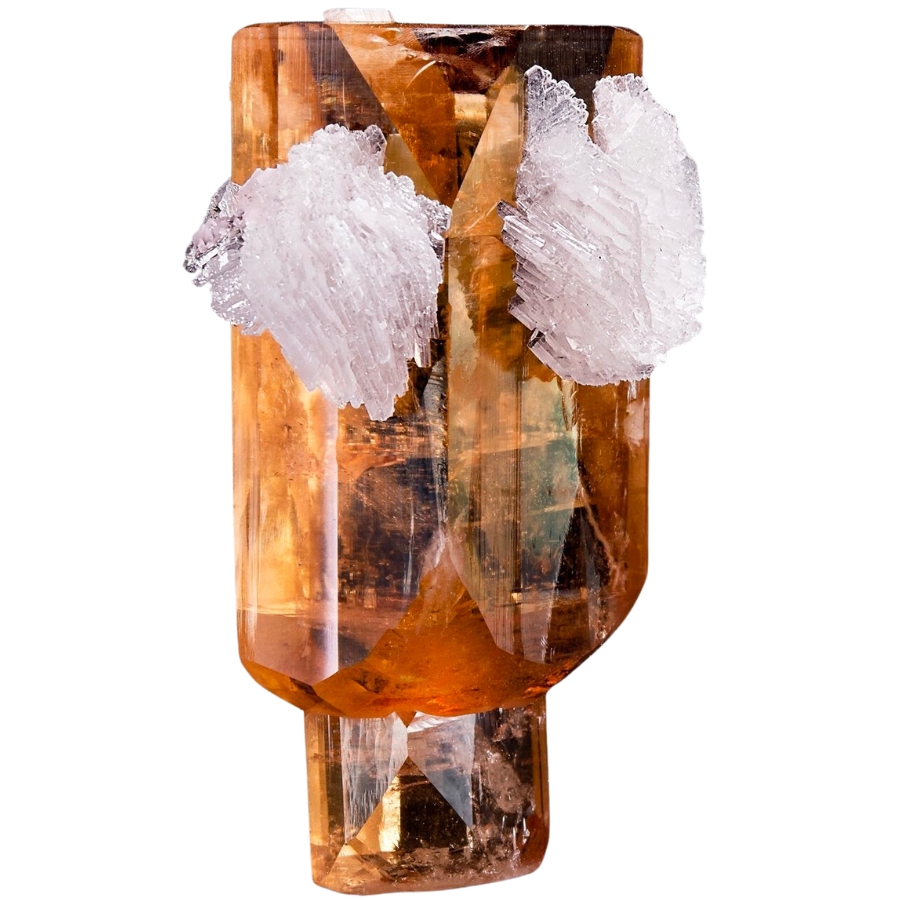
Cognac topaz is known for its rich, warm color, reminiscent of the deep amber hue of cognac. Its color ranges from a golden brown to a reddish-brown, giving it a luxurious and sophisticated look.
The color of cognac topaz is typically achieved through a treatment process, as natural topaz in these shades is quite rare.
Despite its luxurious appearance, it remains an affordable option for those seeking a high-end look without the high-end price. This affordability, combined with its distinctive color and durability, makes cognac topaz a popular and practical choice.
Its deep, warm tones set it apart from other types of topaz. It’s a favorite among those who appreciate earthy, rich colors.
Cognac topaz is also valued for its elegance and versatility. Its deep color makes it a great choice for a variety of jewelry styles, from classic to contemporary.
Where you can find cognac topaz
In its natural form, cognac topaz is not commonly found, as most are color-enhanced. The treatment process used to achieve this color usually involves heating, which enhances the natural beauty of the topaz.
Pink Topaz
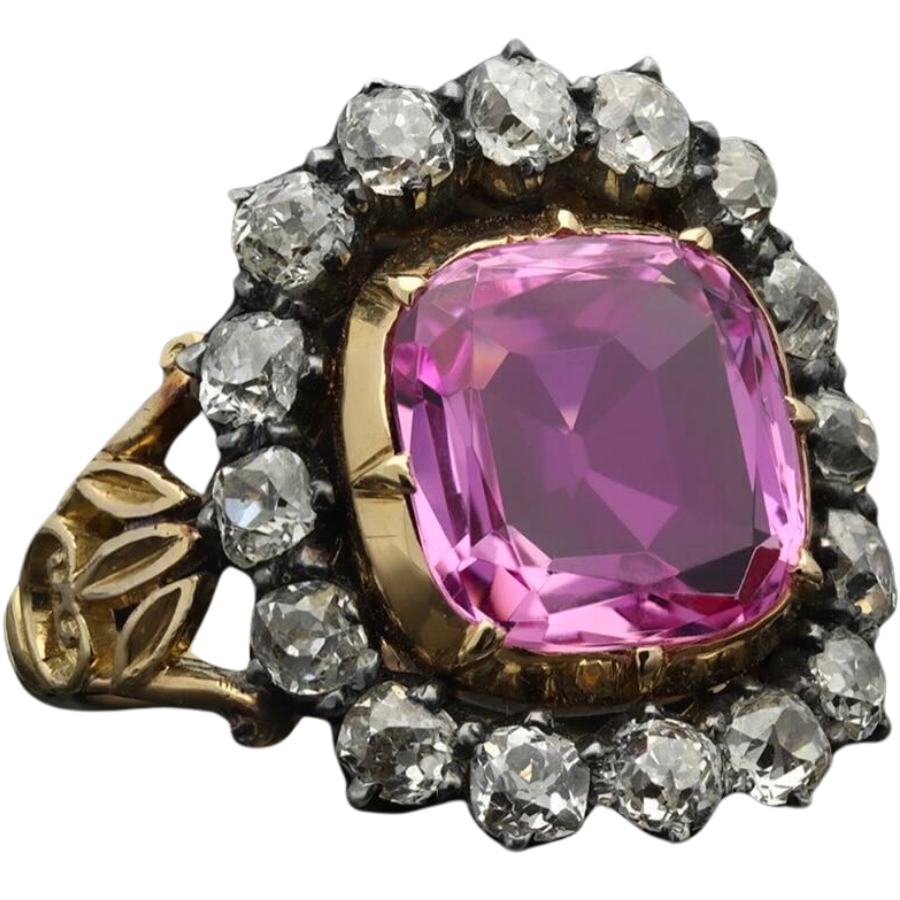
Pink topaz has a range of colors from a soft, delicate pink to a vibrant, rosy red. Its feminine and romantic hues make it quite distinct, capturing the hearts of many jewelry lovers.
Its pink color is often the result of treatment processes, as natural pink topaz is extremely rare. Typically, colorless or lightly tinted topaz is treated with heat or other methods to bring out these lovely pink shades.
The charm of pink topaz lies in its color, which adds a touch of elegance and whimsy to any piece of jewelry. Its rarity, especially in natural forms, contributes to its value and desirability.
It’s also appreciated for its clarity and brilliance, which make it sparkle beautifully when cut and polished.
It’s often given as a gift for the 16th wedding anniversary. Its romantic color and rarity make it a special and meaningful way to celebrate this milestone.
Where you can find pink topaz
Pink topaz, in its natural form, is quite rare and found in only a few locations worldwide. Brazil is known for some of the finest natural pink topaz specimens.
While the USA has several topaz mining areas, natural pink topaz is less commonly found there.
Mystic Topaz
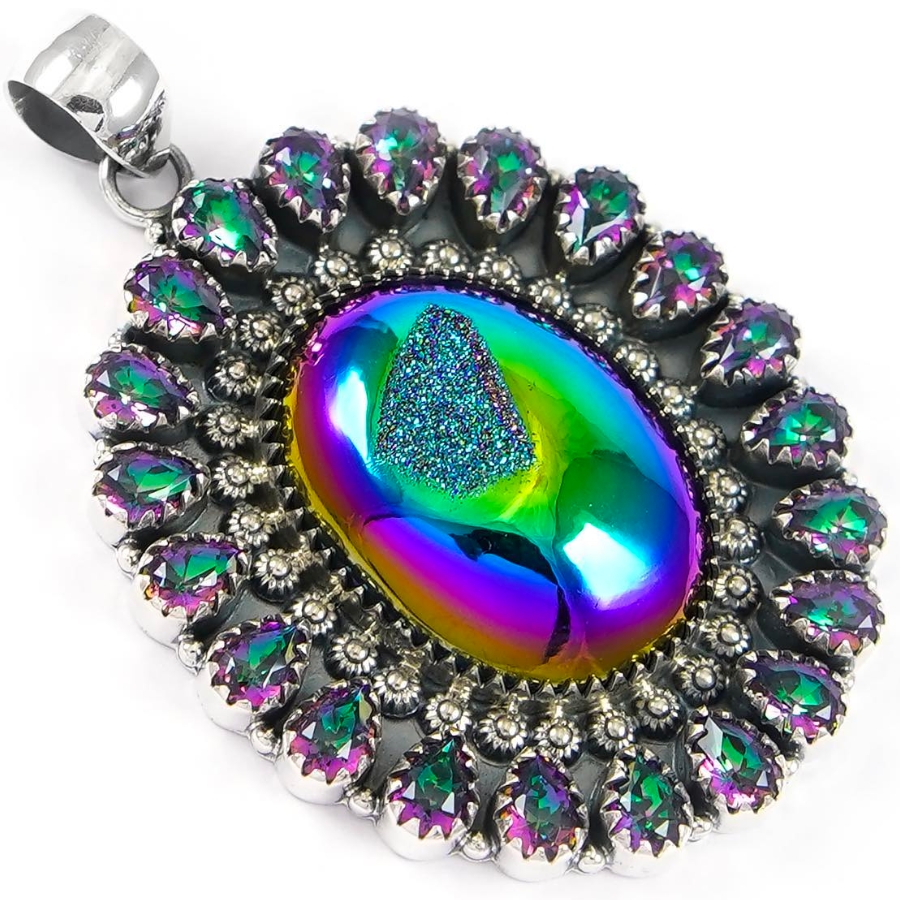
Mystic topaz is a relatively new addition to the gemstone world. It was first introduced in the 1990s, making it an ideal choice if you’re looking for something different or contemporary.
This type of topaz is truly a feast for the eyes. It’s known for its dazzling rainbow colors, with flashes of greens, blues, purples, and sometimes even pinks or yellows.
It’s distinct because of its unique, multicolored appearance. The fascinating play of colors in mystic topaz is what makes it stand out and captivate the attention of anyone who sees it.
It’s valued not only for its stunning appearance but also for its versatility in jewelry design. It can complement a wide range of styles and settings, making it a favorite for both casual and formal wear.
The stone’s durability also makes it suitable for everyday jewelry pieces.
Where you can find mystic topaz
Mystic topaz does not naturally occur. It starts as a natural, colorless, or lightly tinted topaz. Then, through a special treatment process, a thin metallic coating is applied to its surface.
This coating refracts light, creating the rainbow of colors that make it so unique. This process is called “coating,” and it’s what gives mystic topaz its magical, mystical look.
Violet Topaz
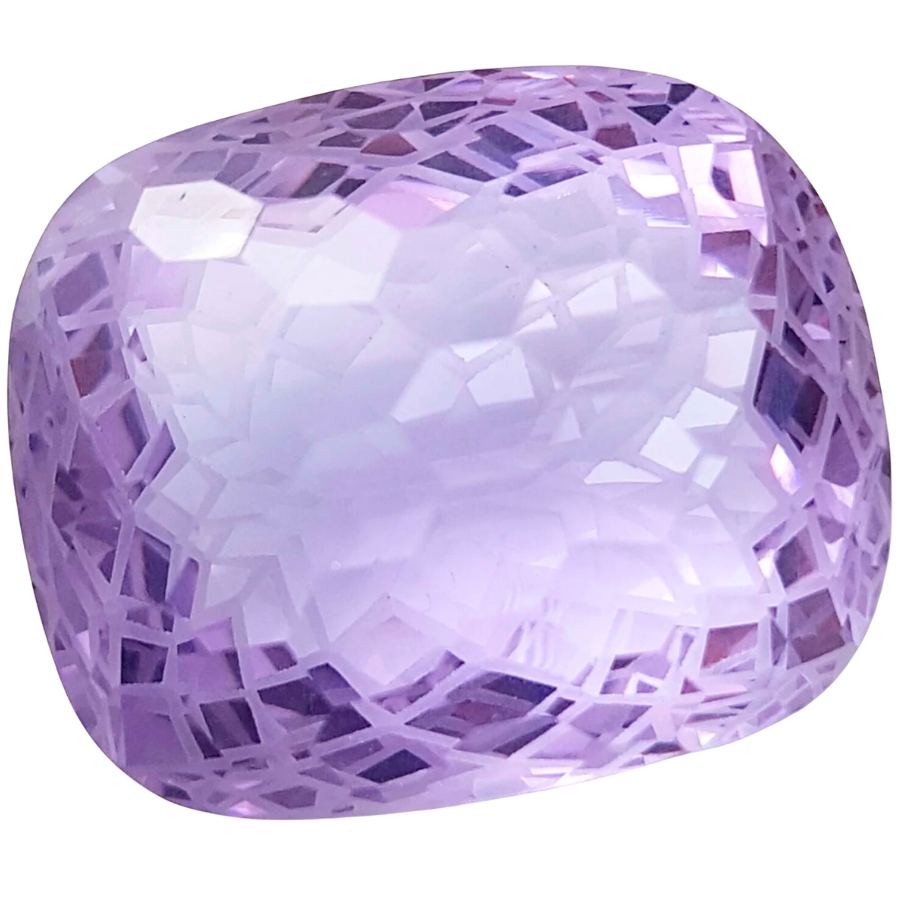
Violet topaz is a rare variety that captivates with its beautiful shades of purple. It can range from a light lilac to a deep violet color.
The presence of natural elements within its crystal contributes to this special coloration, though such naturally occurring violet topaz is quite rare.
The color violet is not commonly found in topaz, which makes it a highly valued gemstone. It’s a favorite among those who are looking for something different aside from the more common blues and yellows.
Violet topaz is also suitable for various types of jewelry. Its unique color provides a striking contrast when set in both silver and gold.
Much of the violet topaz available in the market has been treated to enhance or create its color. Natural violet topaz is exceedingly rare, so most pieces undergo treatments to achieve the beautiful purple shades that make it so desirable.
Where you can find violet topaz
Natural violet topaz, although rare, is typically discovered in locations known for topaz deposits. Brazil is one of its key sources.
While the USA has regions with topaz, such as Utah and Colorado, natural violet topaz is quite scarce.
Green Topaz
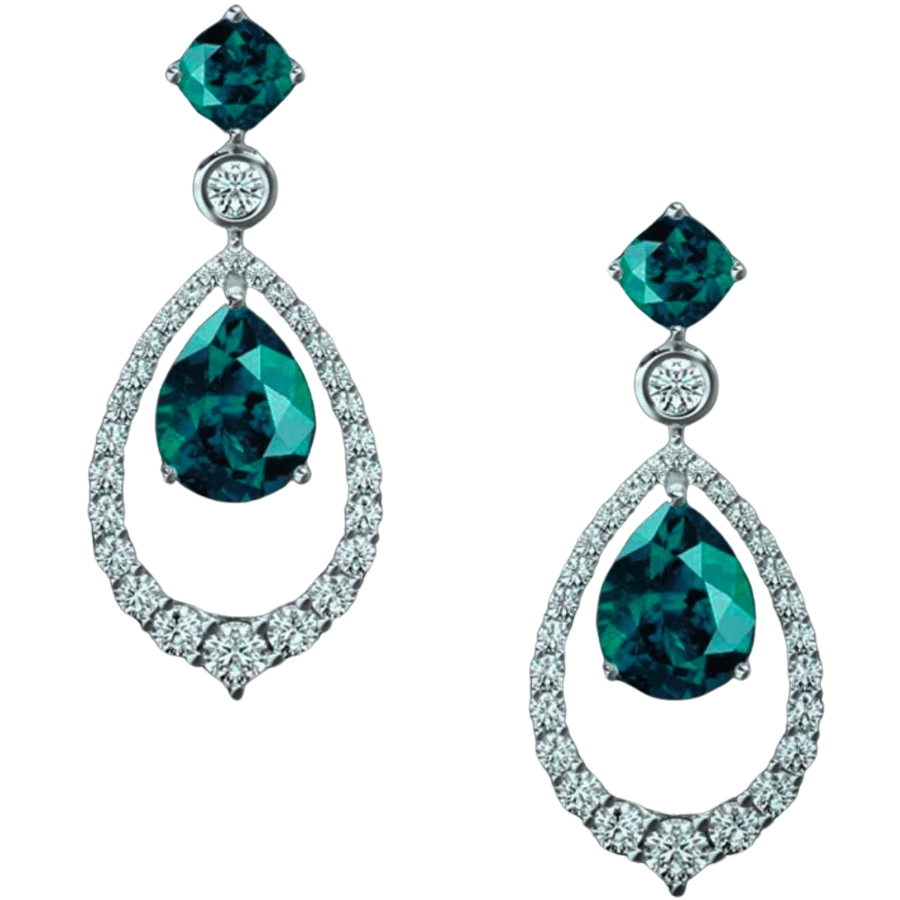
Green topaz is a beautiful type of topaz that stands out with its range of green hues.
It can vary from a light, minty green to a deeper, more vibrant green, giving it a fresh and lively appearance.
Green topaz is valued for its beauty and the distinctiveness of its color, which adds a touch of nature-inspired charm to jewelry.
Its versatility in design and compatibility with different metal settings, like gold and silver, make it a popular choice for a range of jewelry pieces. It’s also appreciated for its durability, making it suitable for everyday wear.
Despite its rarity in its natural form, it has become increasingly popular in recent years. Its fresh green color appeals to those looking for a gemstone that is both unique and reflective of nature’s beauty.
Where you can find green topaz
Natural green topaz is relatively rare, and most pieces available in the market have been treated to enhance or achieve its color.
Its color is usually the result of treatments such as irradiation or coating, which modify the hue of natural, colorless, or lightly tinted topaz. This treatment process allows for a variety of green shades, making each stone unique in its appearance.
Azotic Topaz
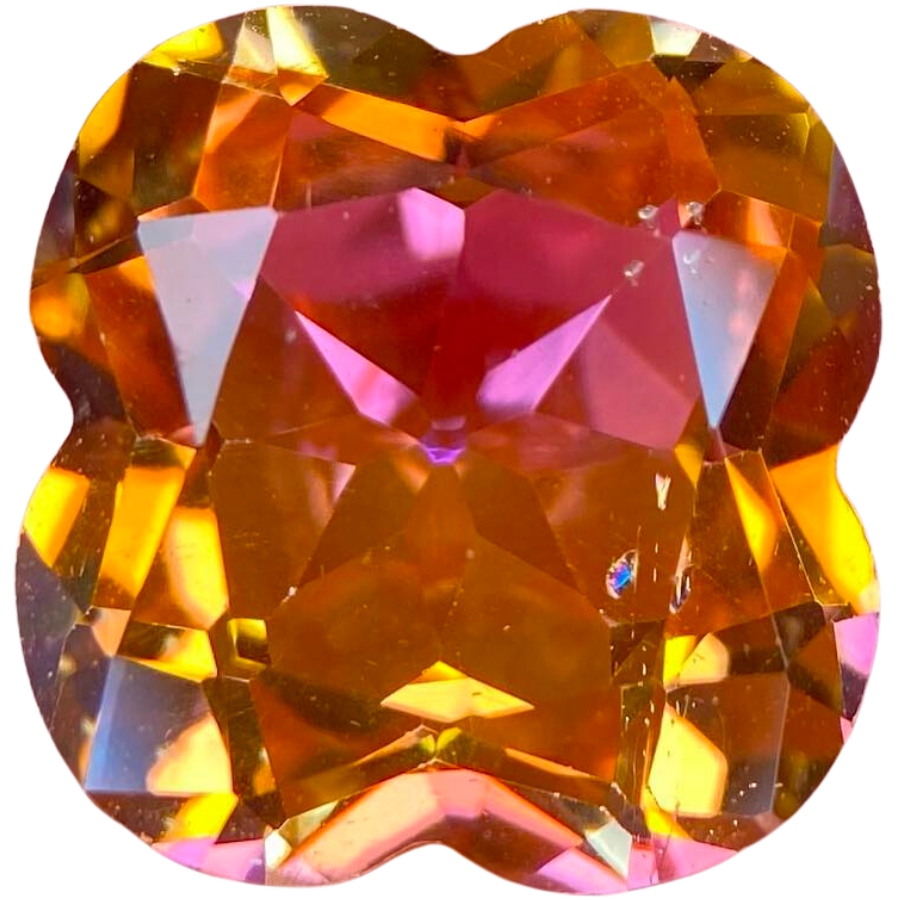
Azotic topaz can catch your eye with its array of dazzling colors. It shows a stunning rainbow of hues, including pinks, oranges, golds, and blues, all shimmering across its surface.
These colors shift and change as the stone moves, making azotic topaz a dynamic and captivating gem.
This type of topaz is valued for its striking appearance and the way it adds a vibrant pop of color to any piece of jewelry. Its uniqueness lies in the iridescent quality of the colors it displays, which is unlike any other gemstone.
The stone’s durability makes it a practical choice for various types of jewelry, from bold statement pieces to more subtle designs.
What’s more interesting is that despite its vivid colors, azotic topaz itself remains transparent or semi-transparent. This transparency, combined with the colorful coating, creates depth and complexity in the gemstone.
Where you can find azotic topaz
Azotic topaz does not naturally form. Its creation involves a special treatment process that starts with a natural, colorless, or lightly tinted topaz. It’s then coated with a thin film of metallic oxides.
This coating reflects light in a way that produces the stone’s unique multicolored effect. The process is named after Azotic Coating Technology, Inc., the company that developed this innovative technique.

